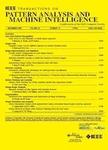版权所有:内蒙古大学图书馆 技术提供:维普资讯• 智图
内蒙古自治区呼和浩特市赛罕区大学西街235号 邮编: 010021

作者机构:South China Univ Technol Sch Automat Sci & Engn Guangzhou 510640 Guangdong Peoples R China Pazhou Lab Guangzhou 510330 Guangdong Peoples R China Guangdong Univ Finance Sch Internet Finance & Informat Engn Guangzhou 510521 Guangdong Peoples R China Amazon Shanghai AI Lab Shanghai 200336 Peoples R China Cent China Normal Univ Natl Engn Res Ctr E Learning Wuhan 430079 Hubei Peoples R China Lehigh Univ Dept Bioengn Bethlehem PA 18015 USA Alto Neurosci Inc Loa Altos CA 94022 USA
出 版 物:《IEEE TRANSACTIONS ON PATTERN ANALYSIS AND MACHINE INTELLIGENCE》 (IEEE Trans Pattern Anal Mach Intell)
年 卷 期:2023年第45卷第12期
页 面:15632-15649页
核心收录:
学科分类:0808[工学-电气工程] 08[工学] 0812[工学-计算机科学与技术(可授工学、理学学位)]
基 金:National Natural Science Foundation of China [61836003, 61876063, 61906048, 62007013] Technology Innovation 2030 [2022ZD0211700]
主 题:Electroencephalography Decoding Classification algorithms Finite impulse response filters Filtering algorithms Brain modeling Feature extraction Electroencephalography (EEG) brain-computer interface (BCI) emotion recognition decoding spatio-temporal filtering sparse Bayesian learning
摘 要:Decoding brain activity from non-invasive electroencephalography (EEG) is crucial for brain-computer interfaces (BCIs) and the study of brain disorders. Notably, end-to-end EEG decoding has gained widespread popularity in recent years owing to the remarkable advances in deep learning research. However, many EEG studies suffer from limited sample sizes, making it difficult for existing deep learning models to effectively generalize to highly noisy EEG data. To address this fundamental limitation, this paper proposes a novel end-to-end EEG decoding algorithm that utilizes a low-rank weight matrix to encode both spatio-temporal filters and the classifier, all optimized under a principled sparse Bayesian learning (SBL) framework. Importantly, this SBL framework also enables us to learn hyperparameters that optimally penalize the model in a Bayesian fashion. The proposed decoding algorithm is systematically benchmarked on five motor imagery BCIEEG datasets (N = 192) and an emotion recognition EEG dataset (N = 45), in comparison with several contemporary algorithms, including end-to-end deep-learning-based EEG decoding algorithms. The classification results demonstrate that our algorithm significantly outperforms the competing algorithms while yielding neurophysiologically meaningful spatio-temporal patterns. Our algorithm therefore advances the state-of-the-art by providing a novel EEG-tailored machine learning tool for decoding brain activity.